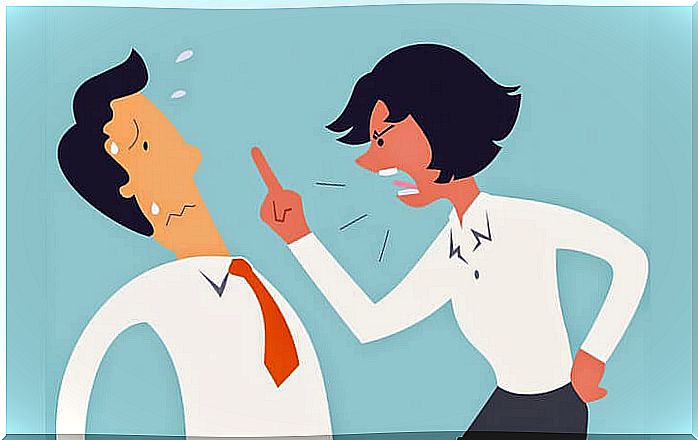5 Techniques To Avoid An Aggressive Conversation

They say that to fight you need at least two parties to face each other. In this sense, the desire for conflict is not necessary, but rather the desire not to avoid it. This desire, seemingly innocent because it can be satisfied with a passive attitude, can cause us to end up being part of a confrontation without realizing it. That is why it is important to learn to avoid aggressive conversation.
The goal of most dialogues is understanding, as far as possible. A goal that is complicated when passion reigns and the starting point of the positions is very distant. It is in these cases that we have to be careful not to give way or feed an aggressive conversation.
How to avoid an aggressive conversation? It can be easy if we automate certain strategies and use them when we identify an escalation of aggressiveness in the dialogue.
1. Keep the dialogue focused
Many know this technique by the colloquial name of “broken record.” It consists of repeating over and over the point we want to go to, ignoring any statement that deviates from it. It is a way of redirecting the conversation to reaffirm ourselves and avoid falling into the aggressive traps of the other.
This technique is useful to avoid an aggressive conversation, since it helps to maintain the communication in rational terms. It is spoken with a goal. By concentrating on that goal, we neutralize other types of messages that can affect emotions and distort the purpose of communication.

2. Cut back on the amount of information that is given
This is an especially effective technique when the other person fills the conversation with hints or subtleties, designed to make us feel bad. It consists of minimizing what we say, to allow the rest of the “parties” to express themselves.
The objective is to get out of that gray field of indirect hints, since these generally mask a residue of aggressiveness, causing confusion and giving rise to conflicts. Thus, being clear in our communication, making sure that the other parties have understood what we wanted to say, is a good way to avoid an aggressive conversation.
3. Assume our fallibility
When two parties clash, it is rare that reason fully assists one of them. It is also frequent that the parties, in order not to be vulnerable, tend to make statements with more confidence than they deserve. Given this temptation, controlling it will decrease the likelihood that aggressiveness will begin to escalate in the exchange of views.
Thus, recognizing part of the reason in the different positions disarms many conflicts before they even begin. By doing so, we establish a framework for dialogue that is much more prone to agreement and, therefore, much less aggressive.

4. Selective attention
This technique has to do with deliberately ignoring the contents or expressions that cause offense or discomfort, while attending only to the central aspects. In particular, it is about ignoring the forms when the other uses the ones that are not suitable.
The interlocutor will soon notice that his words have no effect and he is likely to give up. The right thing to do is to focus on something positive to take the conversation out of the negative realm in which the other wants to place it.
For example when the couple says: “ You are never really aware of me. Last Friday we agreed to go to the movies and you didn’t arrive on time ”. Using selective attention, a possible response would be: “ Would you accept another invitation to the movies and a dinner as compensation? “

5. Separation of topics
This technique is applied when he begins to make us a long list of recriminations. The ideal is to focus first on one of those messages and then, one by one, on the others. If everything is received, together, at the same time, it is easy for us to go wrong when choosing the best coping strategy.
Without realizing it, a person who wants to start a conflict will do everything possible to attract the other to that place. In these cases, criticisms that refer to the person and not to a certain behavior are very frequent. The attack is direct to the other, looking for the other to react.
Although most of the disagreements are healthy and enriching, many times we take these properties from them with our way of proceeding to defend our position. This error, far from preventing an aggressive conversation, favors it, causing it to lose all the good that could come from the exchange of views.









